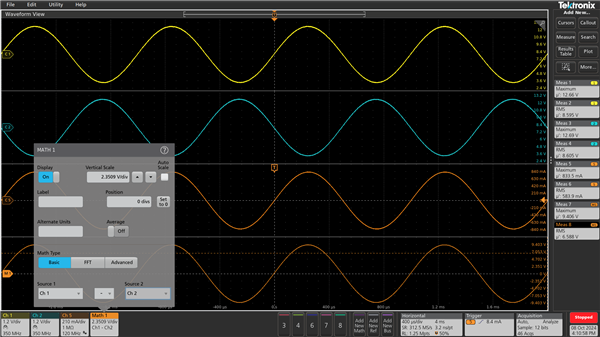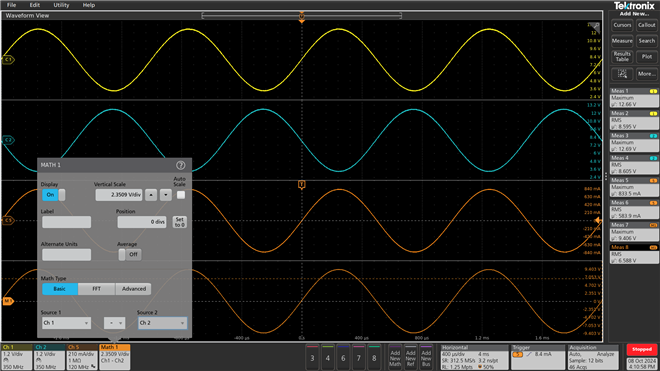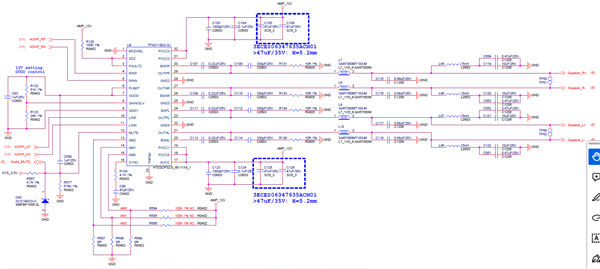Tool/software:
Hi
For below TPA3118D2 output waveform, CH1 = OUTP CH2 = OUTN (both left side), when we calculate power consumption, because it sin wave, normarlly we need calculate RMS, mean or maximum?
Now we using CH1(OUTP)-CH2(OUTN) = 6.588V(RMS) 6.588V * CH3(Output current) 583.9mA = 3.84W 3.84W *2 = 7.69W(postive half wave + negative half wave)
7.69W is the RMS power consumption, may I know this understanding is correct? Or we need other calculation to get correct power consumption value?

Thanks!
Jeff




